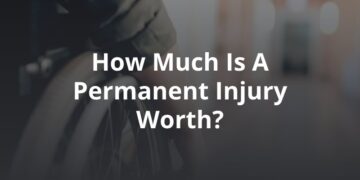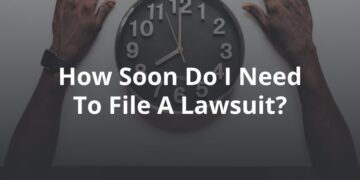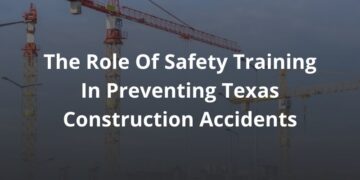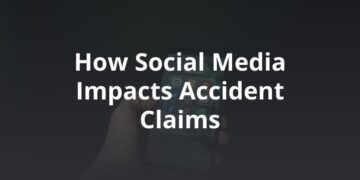If you get hurt in an accident in Texas, you may be able to file a personal injury claim in pursuit of financial compensation for your injuries and related losses. While you generally cannot sue for the negligent infliction of emotional distress (NIED) alone in Texas, you can seek compensation for this damage as part of a personal injury claim. If you’ve been injured in an accident in Austin, consulting with an experienced Austin personal injury lawyer can help you understand your legal rights and options for seeking compensation for your injuries and related losses.
Understanding NIED in Texas
According to the Legal Information Institute, negligent infliction of emotional distress is a tort in which one person’s negligence, or the failure to use proper care, inflicts mental, psychological or emotional suffering on another person. NIED does not necessarily have to involve a physical injury. It can describe anxiety, depression, post-traumatic stress disorder (PTSD), grief, mental anguish or loss of enjoyment of life.
Texas generally does not allow NIED damages. Boyles v. Kerr established that there is no general duty in Texas not to negligently inflict emotional distress. A claimant may only recover damages for mental anguish in connection with a defendant’s breach of another legal duty; for example, emotional distress damages can be sought as part of a larger personal injury claim involving physical injuries.
The “Physical Injury” Requirement for a Texas Personal Injury Claim
In states that allow claims for negligent infliction of emotional distress, you can use a psychological disorder such as PTSD or depression as a stand-alone basis for a lawsuit. In Texas, however, you need a medically detectable physical injury to seek negligence compensation. If you have a detectable physical injury, you can file an ordinary personal injury lawsuit.
Once you have a personal injury claim, however, you can also seek damages for emotional distress. The difference with NIED is that your claim depends on an underlying physical injury for its viability. NIED, as recognized by other states, does not depend on the presence of a physical injury.
What Is Negligence Liability?
To prove liability for negligence, four factors must be present as stated below. Negligence exists if the first two factors are present. Liability exists if all four factors are present:
- Duty of care: The defendant owed you a duty of care.
- Breach of duty: The defendant breached their duty of care to you.
- Damages: You suffered losses in the form of a physical injury
- Causation: The defendant’s negligence caused your personal injury.
You must prove each of the four foregoing factors on a “more likely than not” basis. Once you do this, the full spectrum of personal injury damages is potentially available to you, depending on the facts of your case. You might even win punitive damages.
The Difference Between NIED and IIED in Texas
Texas does not allow a claim based on NIED, but it does permit a claimant to file for intentional infliction of emotional distress (IIED). IIED is when an individual intentionally or recklessly causes severe emotional distress or mental harm to another person. In Texas, a plaintiff can only seek financial compensation for the infliction of emotional distress if a defendant’s actions were intentional, not negligent or unintentional.
The key elements to establish IIED differ from NIED. The elements of negligent infliction of emotional distress can include any of the following, depending on the laws in the state:
- Impact Rule: the defendant’s negligence impacted the plaintiff and caused injury.
- Zone of Danger Rule: the plaintiff was in a zone of danger and at risk of physical harm.
- Foreseeability Rule: the defendant had reason to foresee that his or her actions would cause emotional distress.
The foreseeability rule is followed by most states. IIED, by contrast, must be proven with evidence that the defendant acted intentionally or recklessly, that the defendant’s conduct was extreme and outrageous, that the defendant’s conduct caused the plaintiff’s harm, and that the plaintiff suffered severe emotional distress as a result.
Exceptions to the Rule in Texas
Bystander Claims
While the general rule in Texas is not to allow an individual to sue for negligent infliction of emotional distress, there are some exceptions. Texas recognizes the right of bystanders to recover compensation for mental anguish caused by witnessing a traumatic event, such as a violent dog attack. However, the victim must have been severely injured or killed and the plaintiff must be closely related to the victim.
Special Relationships
Another exception exists for “special relationships.” If a contract creates a special relationship between two parties, this will also impose a duty of good faith and fair dealing. The imposition of this duty could give rise to an NIED claim if one of the parties involved in the contract breaches their duty of good faith and fair dealing and causes the other party emotional distress.
Contact Our Personal Injury Law Firm in Austin, TX
If you’ve been injured in an accident in Austin and need legal assistance, reach out to our dedicated team at FVF Law for a free consultation. Please note that while we primarily focus on personal injury claims, including those involving negligent infliction of emotional distress (NIED) as part of a broader case, we generally do not handle cases solely based on intentional infliction of emotional distress (IIED).
In the event of an accident, having a knowledgeable legal team on your side can make all the difference. Our car accident attorneys in Austin are committed to advocating for your rights and pursuing the compensation you deserve. Please contact FVF Law Firm – Injury & Wrongful Death Lawyers and schedule your free, no-obligation consultation to discuss any questions you may have regarding your case.









